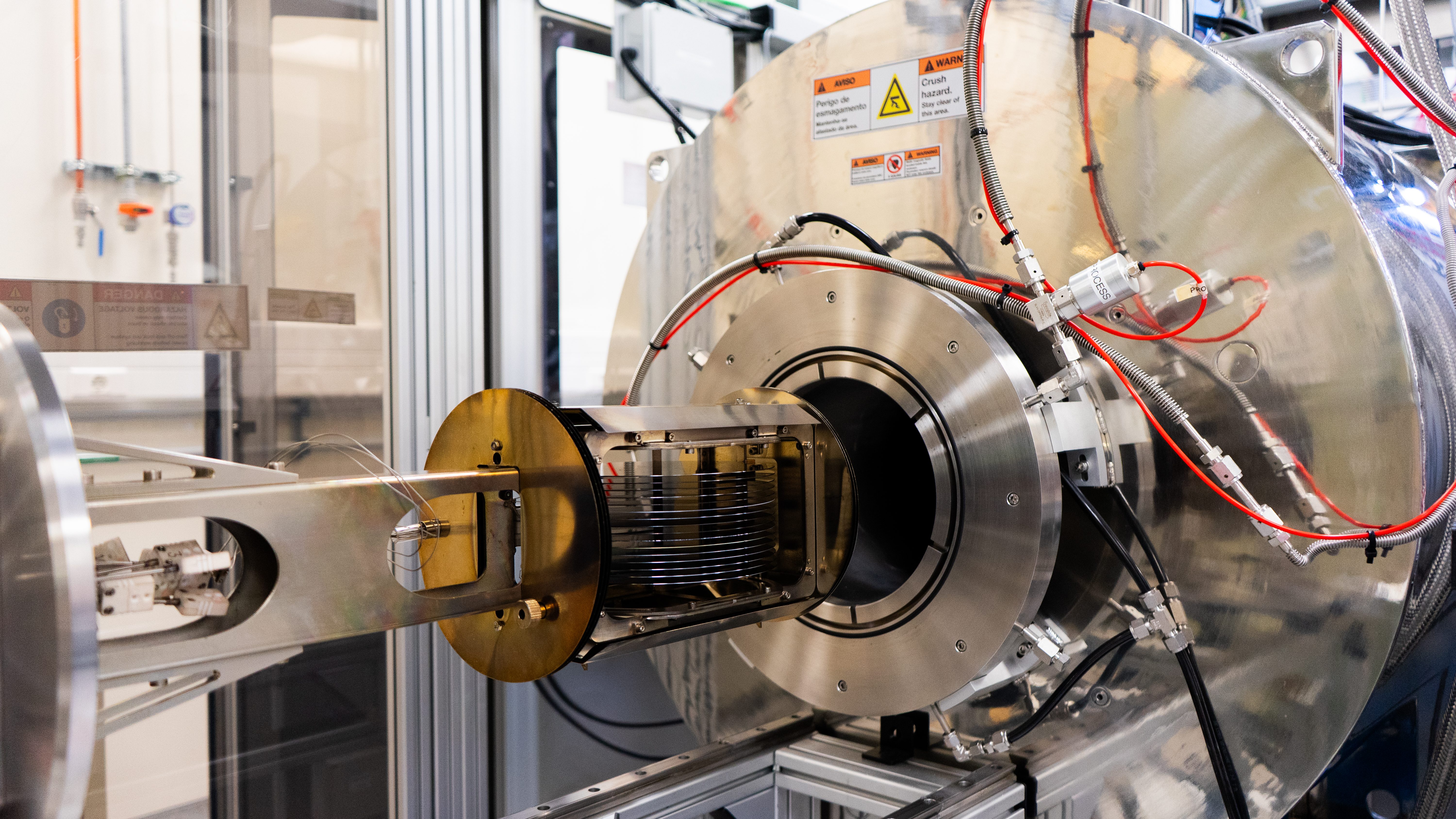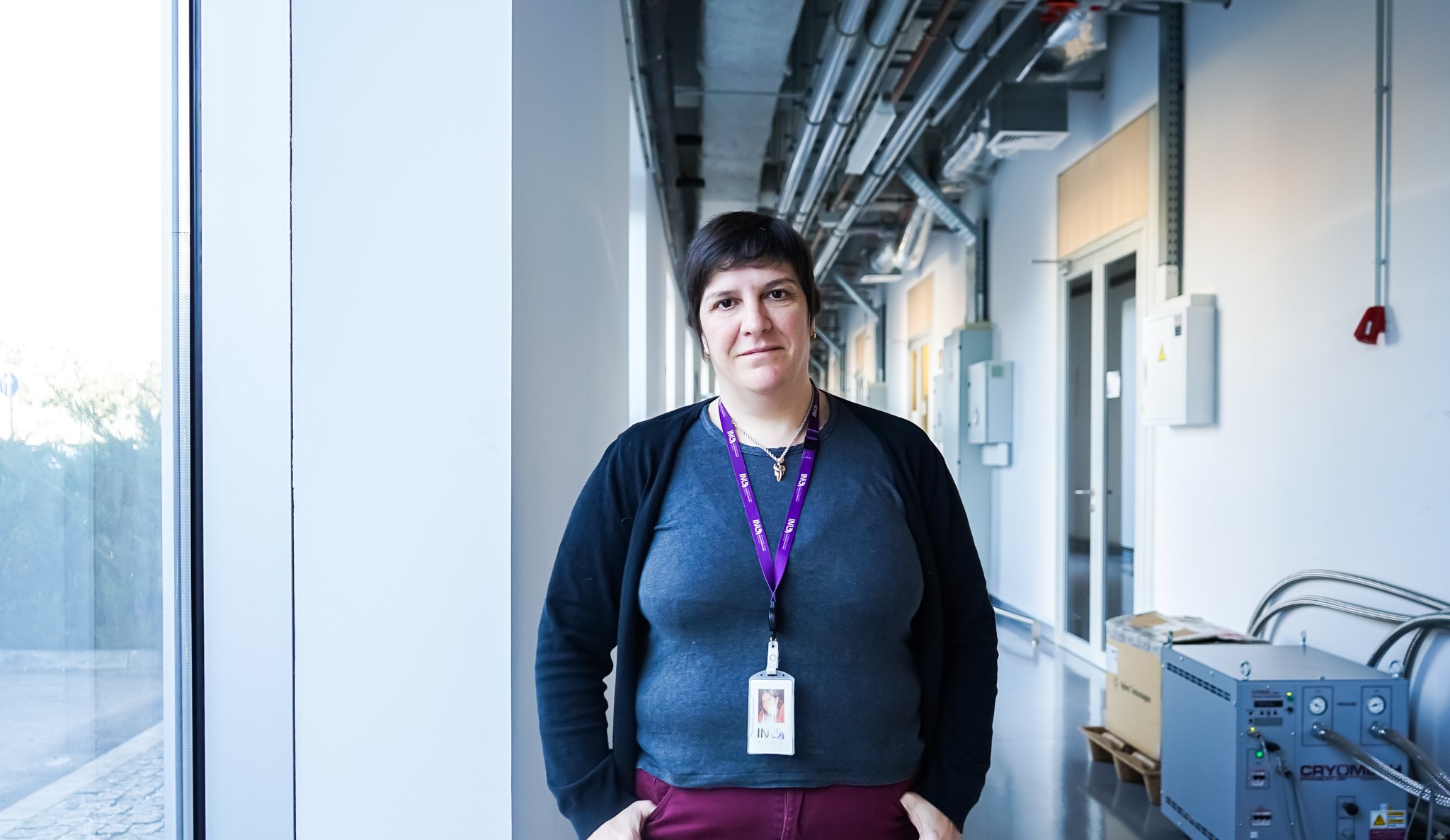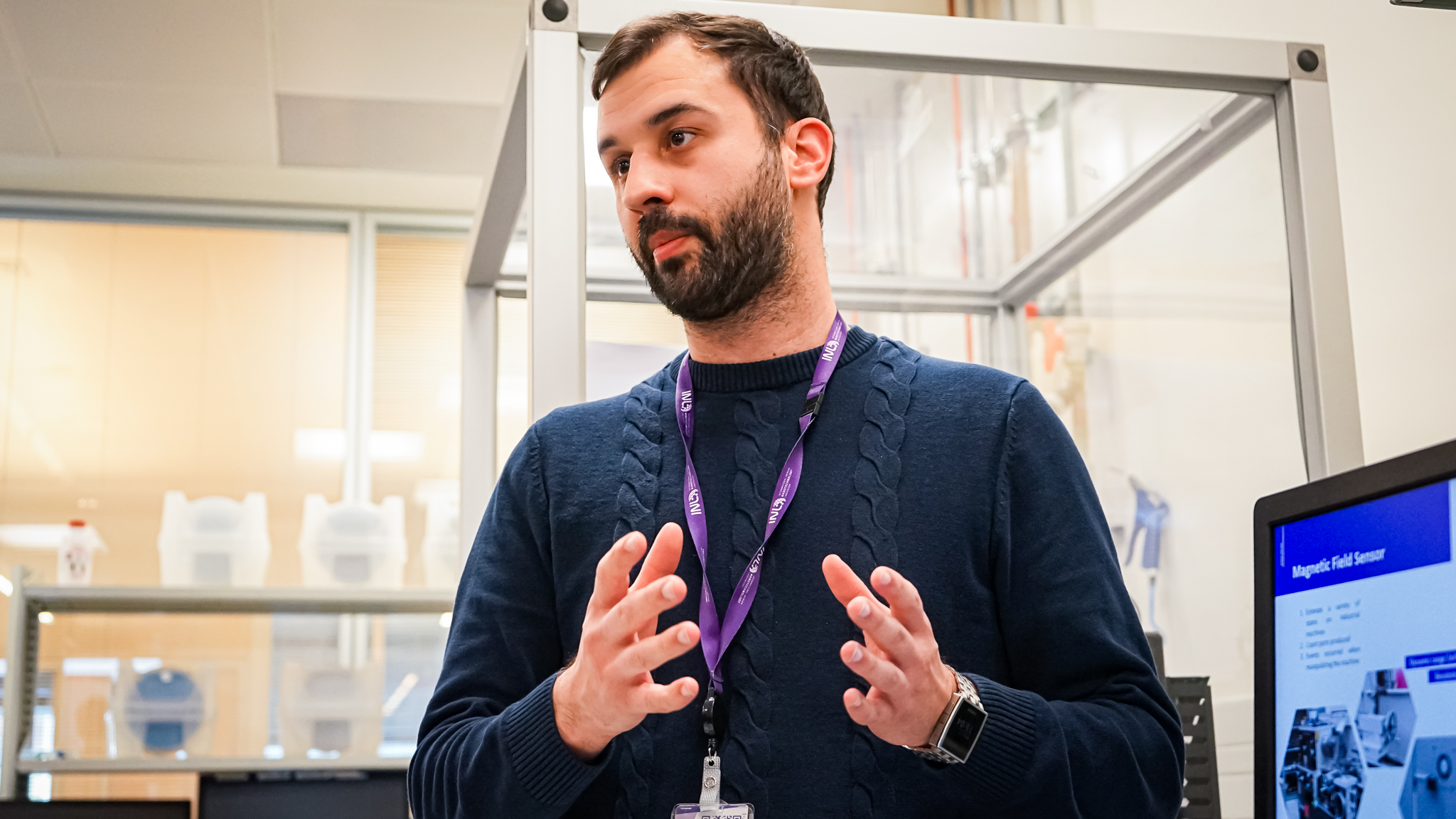
André Araújo, an Electronics Engineer among Physicists
May 9, 2024
André is a Research Engineer working in the Spintronics Research group at INL, and his focus is to provide technical hands-on expertise on advanced embedded systems and techniques, delivering solutions to interface sensors developed by the group.
André holds an MSc in Electrical and Electronical Engineering from Universidade do Minho, specialising in embedded systems and technology systems and information.
What are you currently focusing on in your work?
Spintronics is a research group that has at its core the creation and fabrication of nanodevices, these devices comprise magneto-resistive sensors, oscillators, memristors and so on.
Besides these research lines, there was always the need and interest to take this technology to the real world, testing it in a wide range of fields, and having industrial applications as the major target.
Within this context, the group developed internally a hardware solution to acquire data from magneto-resistive sensors and software to accompany it, to serve as a data logger, a real-time data visualizer and an interpreter of data, both in time and frequency domains. The data can be analyzed, processed with filters and can be fed to AI algorithms to detect events and patterns which are relevant to the end user. The need to tackle real case scenarios and the increased interest in the results obtained creates a need and opens space for an electronics engineer to come in handy.
In my current role, as an electronics engineer, my primary focus is on designing an upgrade for the hardware platform described earlier. This upgrade is set to improve our response to the demanding projects we tackle by enabling the reading of significantly more data and allowing the simultaneous reading of multiple sensors.
The core objective of this upgrade is to enhance our system’s capacity to gather and analyze a broader amount of data. Specifically, the new hardware platform will enable us to acquire data at a rate four times larger than our current system, thus making it possible to analyze higher frequencies and improve the time resolution.
Additionally, the upgrade will empower our system to read data from multiple sensors simultaneously, enabling us to correlate data from multiple sources.
Reading multiple sensors enables a vectorial readout of magnetic fields, which is something that I want to explore because it can lead to new applications and very interesting data collection.

What led you to choose Spintronics as your field of work?
When I first arrived at INL to join the Spintronics Group, I admittedly had very limited, to no, knowledge of the field, I was an electronics engineer among physicists, and some of the concepts and meetings were comparable to rocket science. However, as time passed and the more I got into the subject, I began to recognize the potential it held, both in terms of technological advancement and real-world application, which in fact is one of the key ingredients that drives me.
It was presented to me as a career challenge, to work with technology that I was not familiar with, to take that technology and apply it to real case scenarios.
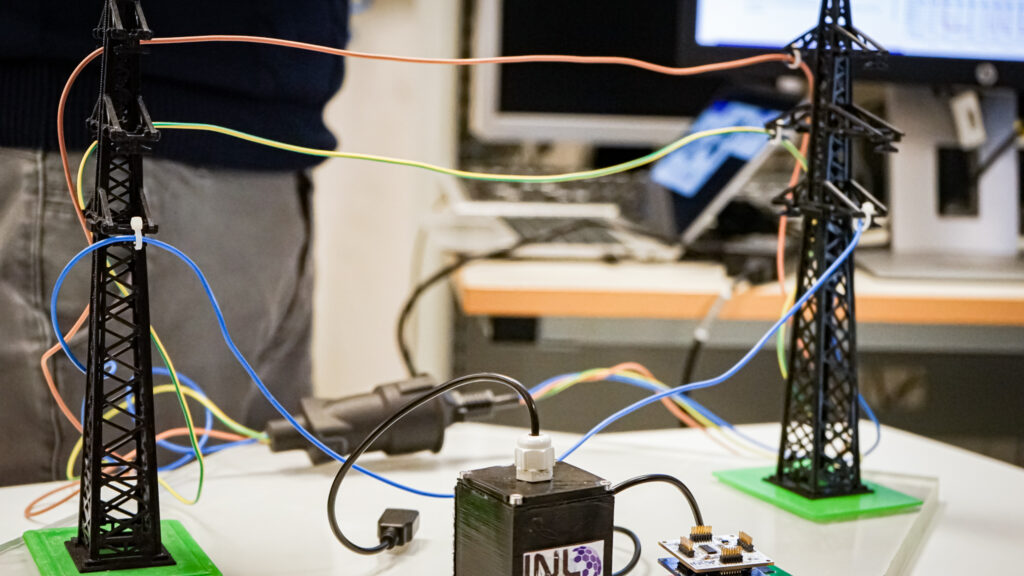
What is your perspective on the advancement of Spintronics?
My perspective on the advancement of Spintronics is deeply influenced by the growing understanding of its vast potential across diverse fields. The more projects I get to know the more new and exciting use case scenarios emerge, showing the versatility and applicability of Spintronics magneto-resistive sensors.
These sensors have a wide range of applications, from predictive maintenance and weight measurement to medicine and RF detection. What truly sets them apart is their ability to replace conventional sensors in many instances, thanks to their compact size, higher precision, and low power consumption.
From a practical standpoint, our sensors have the potential to revolutionize various sectors by providing more efficient and reliable sensing solutions.
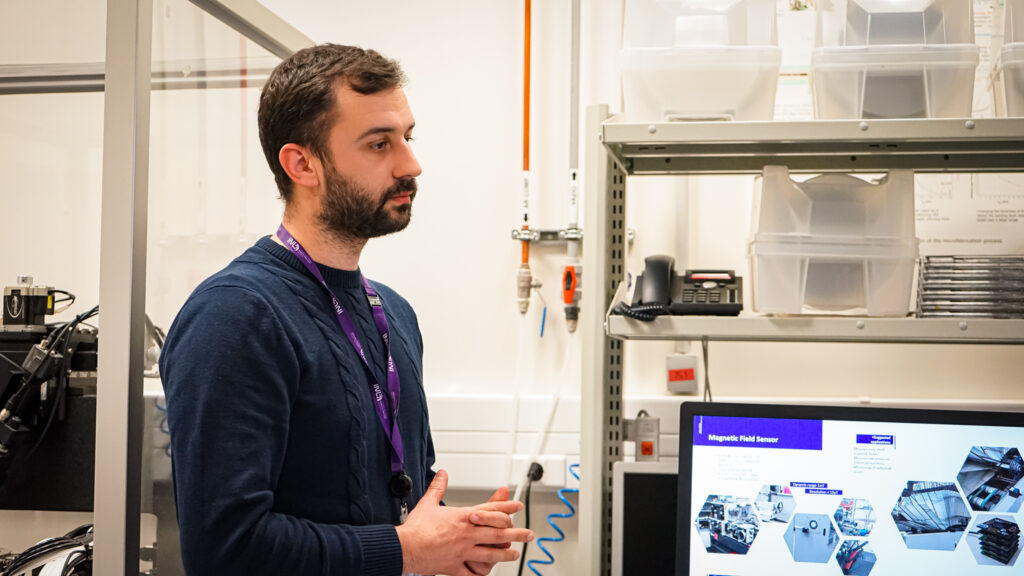
What sparks your inspiration and enthusiasm for science?
What sparks my inspiration and enthusiasm for science is the tangible impact it can have on people’s lives. As an electrical engineer, my vision and enthusiasm for science are, probably, different from my co-workers at Spintronics. They have a mindset oriented toward research breakthroughs while my focus is on the practical application of their scientific achievements.
Despite this feeling, science is a common ground of knowledge and pursuit of the truth, and that, in my opinion, is what we do in the Spintronics research group.
Text and Photography by Gina Palha, Corporate Communication and Marketing Officer
